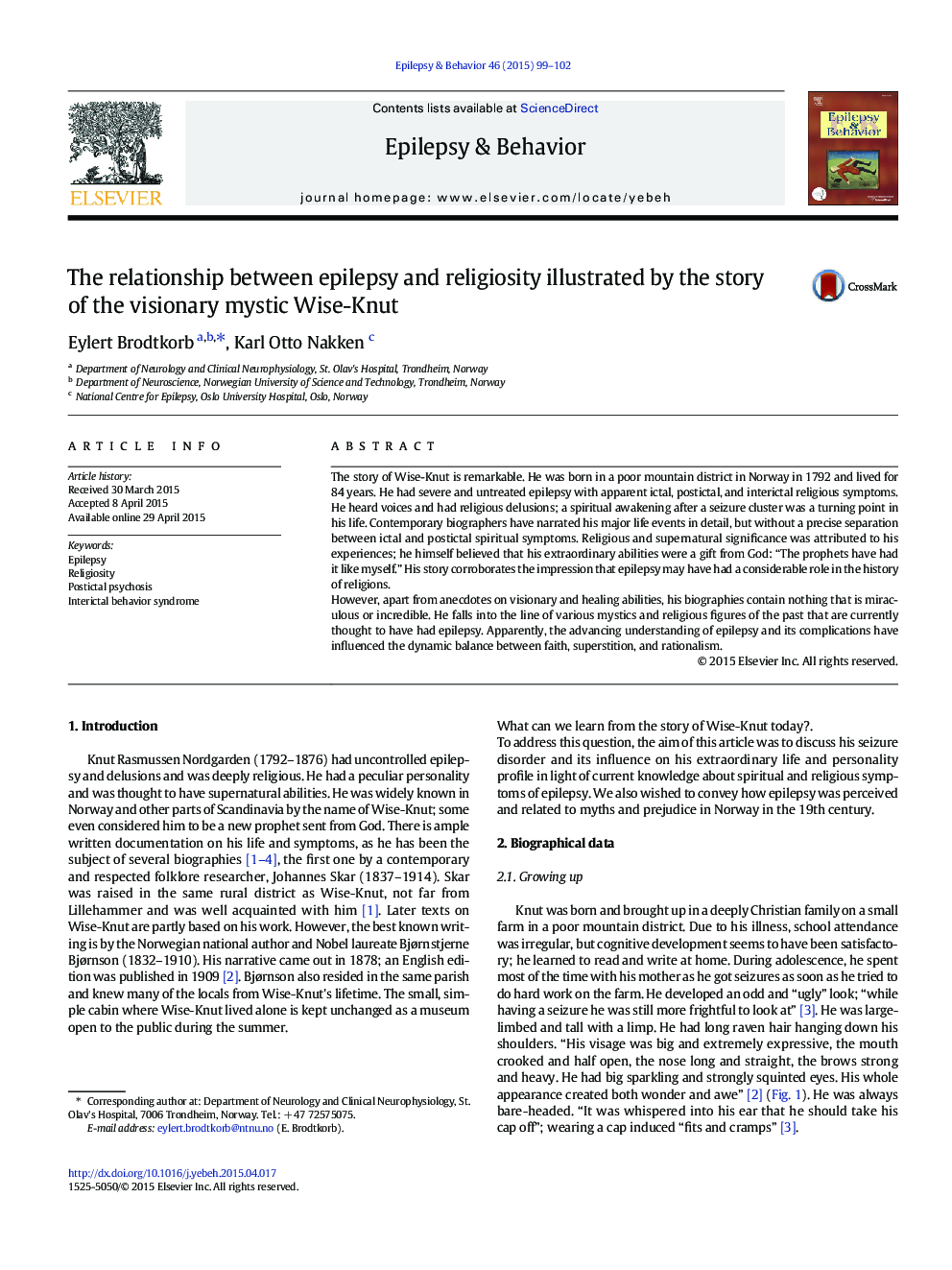| Article ID | Journal | Published Year | Pages | File Type |
|---|---|---|---|---|
| 6010939 | Epilepsy & Behavior | 2015 | 4 Pages |
â¢The visionary mystic Wise-Knut (1792-1876) had severe and untreated epilepsy.â¢He appears to have had ictal, postictal, and interictal religious symptoms.â¢Supernatural significance was attributed to his experiences.â¢In modern society, such symptoms are interpreted differently.â¢Rational explanations of such symptoms should be provided globally.
The story of Wise-Knut is remarkable. He was born in a poor mountain district in Norway in 1792 and lived for 84Â years. He had severe and untreated epilepsy with apparent ictal, postictal, and interictal religious symptoms. He heard voices and had religious delusions; a spiritual awakening after a seizure cluster was a turning point in his life. Contemporary biographers have narrated his major life events in detail, but without a precise separation between ictal and postictal spiritual symptoms. Religious and supernatural significance was attributed to his experiences; he himself believed that his extraordinary abilities were a gift from God: “The prophets have had it like myself.” His story corroborates the impression that epilepsy may have had a considerable role in the history of religions.However, apart from anecdotes on visionary and healing abilities, his biographies contain nothing that is miraculous or incredible. He falls into the line of various mystics and religious figures of the past that are currently thought to have had epilepsy. Apparently, the advancing understanding of epilepsy and its complications have influenced the dynamic balance between faith, superstition, and rationalism.
